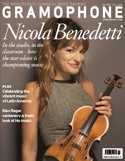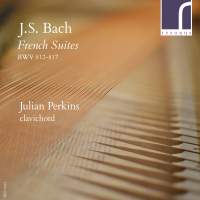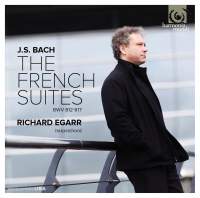Texte paru dans: / Appeared in:
|
|||||||
|
Outil de traduction (Très approximatif) |
|||||||
|
Reviewer:
Lindsay Kemp
Richard Egarr
uses a copy of a French harpsichord for his enjoyable recording, and what a
beauty it is, especially in the single 8ft register! Egarr’s sarabandes are not
as lovingly done as Perkins’s but his allemandes are as delightful as I have
heard, like lazily flowing summer rivers intrigued by rubato eddies. The heavier
registration used for courantes and gigues confirms, however, that the overall
conception here is bigger – indeed, if one didn’t know the Bach Partitas and
English Suites existed, Egarr’s bold and confident bearing might prevent one
thinking of these suites in the conventional way as ‘small’ at all. As usual, he
adds plenty of surface ornamentation, mostly in the form of trills, filled-in
intervals and broken-chord flickers, but their ubiquity can make them seem
rather dutiful after a while. Mind you, who nowadays would attempt to match the
daring elegance of Bach’s own variant passage in the second half of the Fifth
Sarabande, used as a repeat ornament by both Perkins and Egarr, and enough to
remind one of the greatness that lies even in what can seem Bach’s most
unassuming music? |
|||||||
|
Consultez d'autres mois / Browse other months
|
|||||||
|
|
|
||||||
|
Cliquez l'un ou l'autre
bouton pour découvrir bien d'autres critiques de CD |
|||||||





